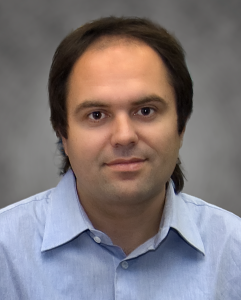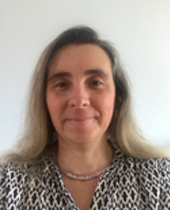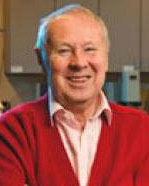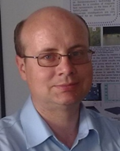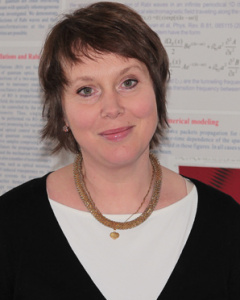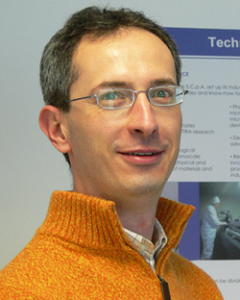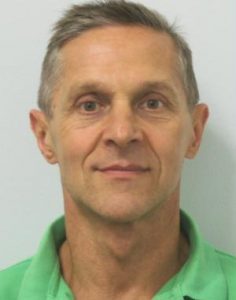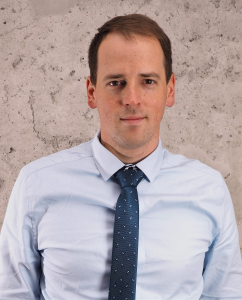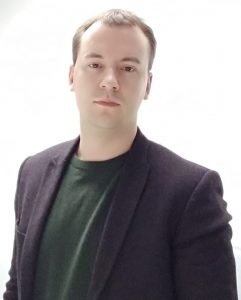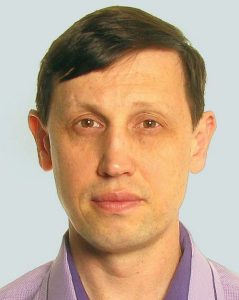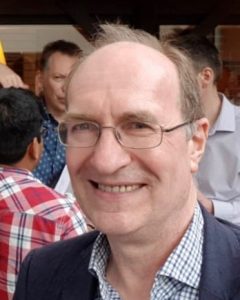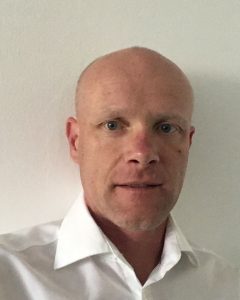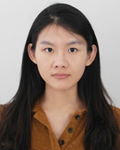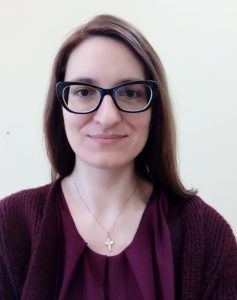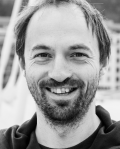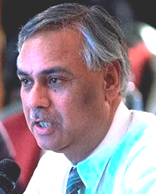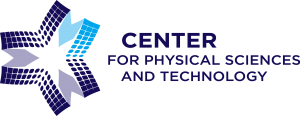| P6 |
Selective Elimination of Atoms or Ions in Crystals and Molecules Produced with X-Rays
Arvydas Juozapas Janavičius, Romaldas Purlys, Ringaudas Rinkūnas, Mindaugas Viliūnas, Saulius Daugėla |
| P7 |
Electroless Deposition of Pt Using Co(II)/Co(III) Redox System
Aldona Jagminienė, Loreta Tamašauskaitė-Tamašiūnaitė, Ina Stankevičienė, Eugenijus Norkus |
| P8 |
Formation of Micro Channels in PDMS via Femtosecond Laser Irradiation
Mindaugas Juodėnas, Tomas Jurkšas,Tomas Tamulevičius, Artūras Vailionis, Sigitas Tamulevičius |
| P9 |
Formation of Porous Silicon in the Cooled Electrolytes
Aliaksandra Hurbo, Vitaly Bondarenko |
| P10 |
High Yield CuO Nanowire Growth Via Thermal Oxidation Method for Application in Nanoelectromechanical Switches
Raitis Sondors, Matiss M. Ramma, Edijs Kauranens, Jelena Kosmaca, Raimonds Meija, Mikk Antsov, Donats Erts |
| P11 |
Cold Plasma Deposited FeOX – Application for the Catalytic Conversion of CO2 to CO
Jacek Balcerzak, Ryszard Kapica, Hanna Kierzkowska-Pawlak, Jacek Tyczkowski |
| P12 |
Laser Induced Changes in Nanostructure of Plasma-Deposited CoOX Films
Ryszard Kapica, Marcin Kozanecki, Jan Sielski, Jacek Tyczkowski |
| P13 |
AIII-BV QW Structures with Bi for IR Range Optoelectronic Devices
Simona Pūkienė, Mindaugas Karaliūnas, Algirdas Jasinskas, Evelina Dudutienė, Bronislovas Čechavičius, Andres Udal, Gintaras Valušis, Renata Butkutė |
| P14 |
Comparison of SERS-Activity of Silicon Nanowires Coated with Silver Using Wet and Dry Processes
Arseni Klimenka, Sergey Zavatski, Nikita Grevtsov, Hurbo Aliaksandra, Viktar Khaliava, Hannah Bandarenka, Vitaly Bondarenko |
| P15 |
Application of Variable Thickness Anodic Alumina as Evaporation Masks for Production of Nanostructured Plasmonic Films and Nanoparticle Arrays
Daniels Jevdokimovs, Raimonds Poplausks, Juris Prikulis, Uldis Malinovskis, Mindaugas Juodėnas, Donats Erts |
| P16 |
Decoration of ZnO Nanorod Arrays with Gold Nanoparticles Using Dip-Coating Method
Margarita Baitimirova, Uldis Malinovskis, Asta Tamulevičienė, Juris Prikulis, Donats Erts |
| P17 |
The Influence of Strong Magnetic Field to Ice-Iron Sliding Properties
Ivars Driķis |
| P18 |
Investigation of Structured Thin Film Growth by Optical Monitoring
Gabija Petrauskaitė, Lina Grinevičiūtė, Lukas Ramalis, Tomas Tolenis |
| P19 |
Analysis of Silver Nanoparticle Size Distribution in DLC Matrix Before and After fs-Laser Irradiation
Gerda Klimaitė, Aušrinė Jurkevičiūtė, Tomas Tamulevičius, Sigitas Tamulevičius |
| P20 |
Photoluminescence and Plasmonic Scattering Studies of Zinc Oxide Nanorods with Noble Metal Nanoparticles
Dilafruz Kulmatova, Margarita Baitimirova, Uldis Malinovskis, Tomas Tamulevičius, Yuliya Harmaza, Donats Erts, Juris Prikulis |
| P21 |
Electrical Properties of Single and Multilayer Silicon Nitride Dielectric for Applications in Nanocapacitors
Liga Avotina, Marina Romanova, Elina Pajuste, Gennady Enichek, Aleksandrs Zaslavskis, Jurijs Dehtjars, Gunta Kizane |
| P22 |
Fabrication of Bimetallic Fe/Cu Catalyst for Heterogenous Fenton Process Catalysis
Aliona Nicolenco, Modestas Vainoris, Francisco Alcaide, Natalia Tsyntsaru, Henrikas Cesiulis |
| P23 |
New Approach to Fabrication of SERS-Active Substrates Based on Colloidal Nanoparticles
Nadzeya Khinevich, Sigitas Tamulevicius, Asta Tamuleviciene, Hanna Bandarenka, Sergey Zavatski |
| P24 |
Production of High-Density Au Nanoparticle Arrays on Nanoporous Anodic Alumina from Colloidal Solutions
Uldis Malinovskis, Raimonds Poplausks, Aušrinė Jurkevičiūtė, Juris Prikulis, Donats Erts |
| P25 |
Investigation of Directionality of Chitosan/Polyethylene Oxide Nanofibers
Sandra Varnaitė-Žuravliova, Natalja Savest, Julija Baltušnikaitė-Guzaitienė, Aušra Abraitienė, Andres Krumme |
| P26 |
Modeling of Diffusion Process in Oxygen Mobility Experiment in CexZr1–xO2 Catalysts: Kinetic Model
Muhammad Usman, Arvaidas Galdikas |
| P27 |
Optically Transparent Fluorine Doped Tin Oxide Application for Phospholipid Membrane Formation
Inga Gabriunaite, Margarita Poderyte, Aušra Valiūnienė |
| P28 |
Luminescence of Rare Earth Ions in Magnesium Coatings Prepared by Plasma Electrolytic Oxidation
Krisjanis Auzins, Krisjanis Smits, Aleksejs Zolotarjovs, Ivita Bite, Carsten Blawert |
| P29 |
NEM Switch Operating Voltage Reduction and a Combined Lithography-Dielectrophoresis Method for NEM Switch Production
Raimonds Meija, Liga Jasulaneca, Jelena Kosmaca, Jana Andzane, Matiss M. Ramma, Edijs Kauranens, Donats Erts |
| P30 |
UV Sensing with ZnO Nanotetrapods
Rasa Mardosaitė, Agnė Šulčiūtė, Mindaugas Ilickas, Paulius Laurikėnas, Simas Račkauskas |
| P31 |
High Diffraction Efficiency Periodic Micro Structures
Andrius Žutautas, Tomas, Tamulevičius, Sigitas Tamulevičius |
| P32 |
Synthesis of Silver Nanostructures and Their Modification with Ultrashort Laser Pulses
Mantas Mikalkevičius, Mindaugas Juodėnas, Tomas Tamulevičius, Till Leißner, Asta Tamulevičienė |
| P33 |
Single Particle Self-Assembly proved by Surface Lattice Resonance
Mindaugas Juodėnas, Tomas Tamulevičius, Joel Henzie, Donats Erts, Sigitas Tamulevičius |
| P34 |
Electroless Deposition of Cu-Zn Alloys Using Co(III)/Co(II) Redox Couple as a Reducing Agent
Ina Stankevičienė, Aldona Jagminienė, Jūratė Vaičiūnienė, Eugenijus Norkus |
| P35 |
Mechanically Polished Titanium Surface For Tethered Bilayer Lipid Formation
Tomas Sabirovas, Aušra Valiūnienė |
| P36 |
Electroless Deposition of Cobalt-Nickel-Boron Coatings
Jūratė Vaičiūnienė, Zita Sukackienė, Ugnė Narkevičiūtė, Loreta Tamašauskaitė-Tamašiūnaitė, Eugenijus Norkus |
| P37 |
Evaluation of Electrospun Nanofiber Structure
Virginija Kleivaitė, Rimvydas Milašius |
| P38 |
Refractive Index Optical Fiber Sensors Applying Doped Diamond Films
Monika Kosowska, Daria Majchrowicz, Małgorzata Szczerska |




